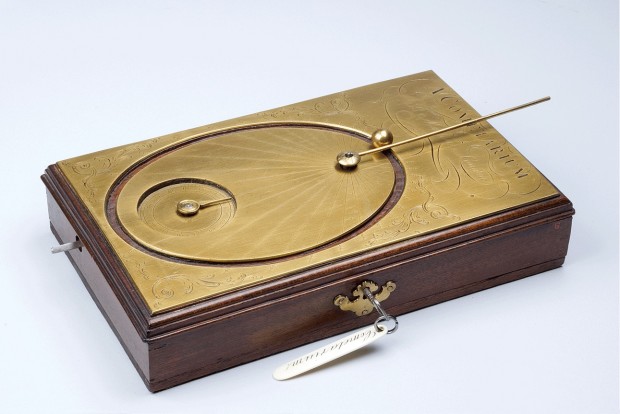
A clue to the function of this instrument can be gleaned from the title engraved across the top of the brass plate: “A COMETARIUM.” For a complete explanation, I’ll turn to the caption from the object’s museum record:
This apparatus was designed to demonstrate how the speed of a comet varies in its orbit according to Kepler’s law of equal areas…. The mechanism, operated by a hand-crank (missing), turns two brass pointers. The longer one pushes a brass ball along an elliptical orbit. The other pointer measures time on a scale marked off in yearly units from 1 to 75 1/2.
The instrument was made in London by one Benjamin Martin in the mid eighteenth century. Sumptuously fabricated in mahogany, brass, and ivory, Martin’s clockwork instrument animates the orbit of Halley’s Comet, which had appeared in the skies in 1759, arousing public interest in all things cometary. Harvard College ordered it in 1766, paying �3.13.6 as part of a plan to restock its “philosophical chamber,” which had been destroyed when the library burned down three years before. What astonishes me about Martin’s cometarium is the craftsmanship and materials he lavished on a device that is essentially a toy: it doesn’t measure or compute anything; its only use is to demonstrate one comet’s lonely path through the solar system. Well, that�and to fire the imagination.
Martin’s Cometarium is in Harvard’s Collection of Historic Scientific Instruments; the web record features an animated gif of the instrument in action.
 Gearfuse Technology, Science, Culture & More
Gearfuse Technology, Science, Culture & More


